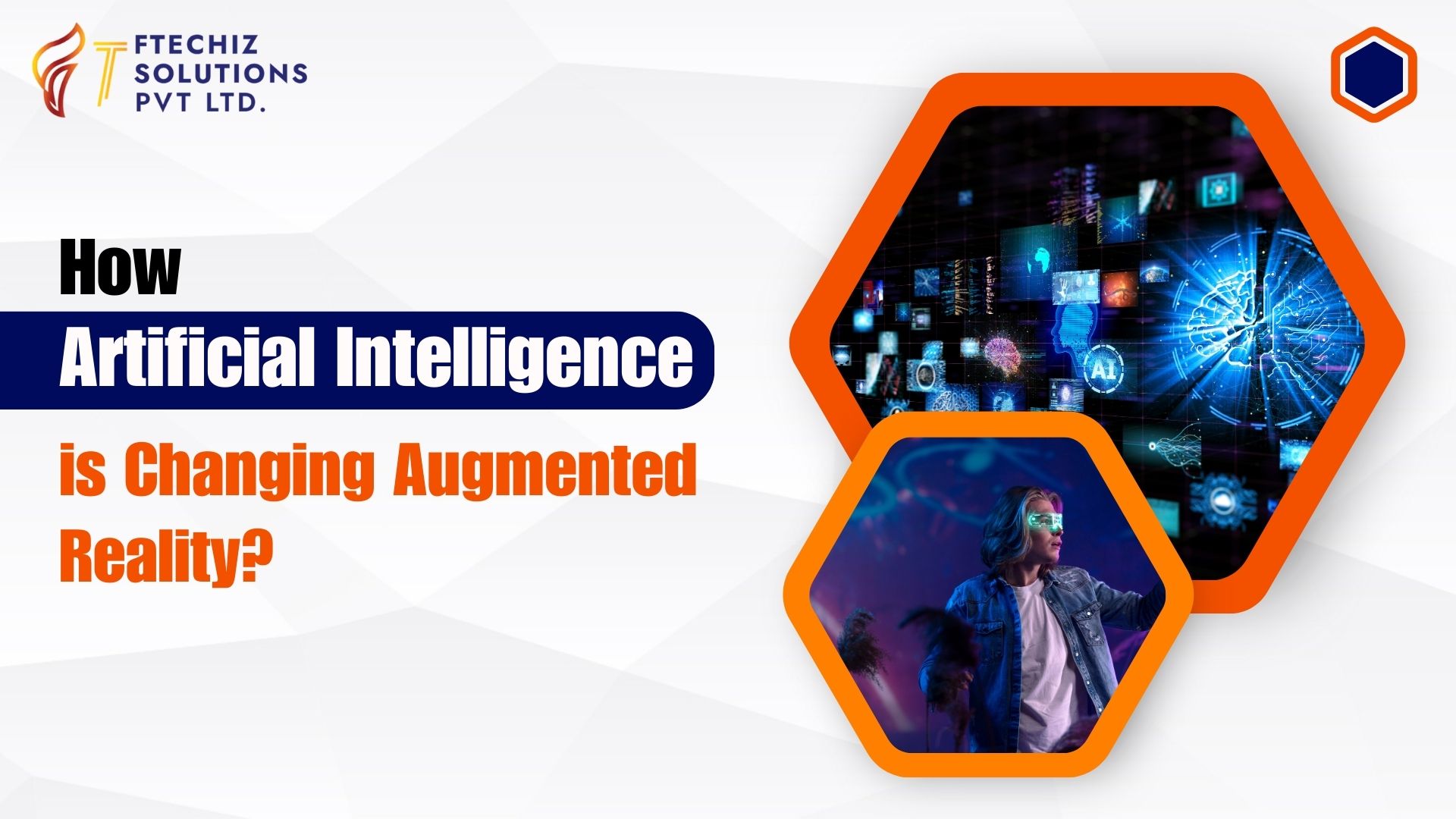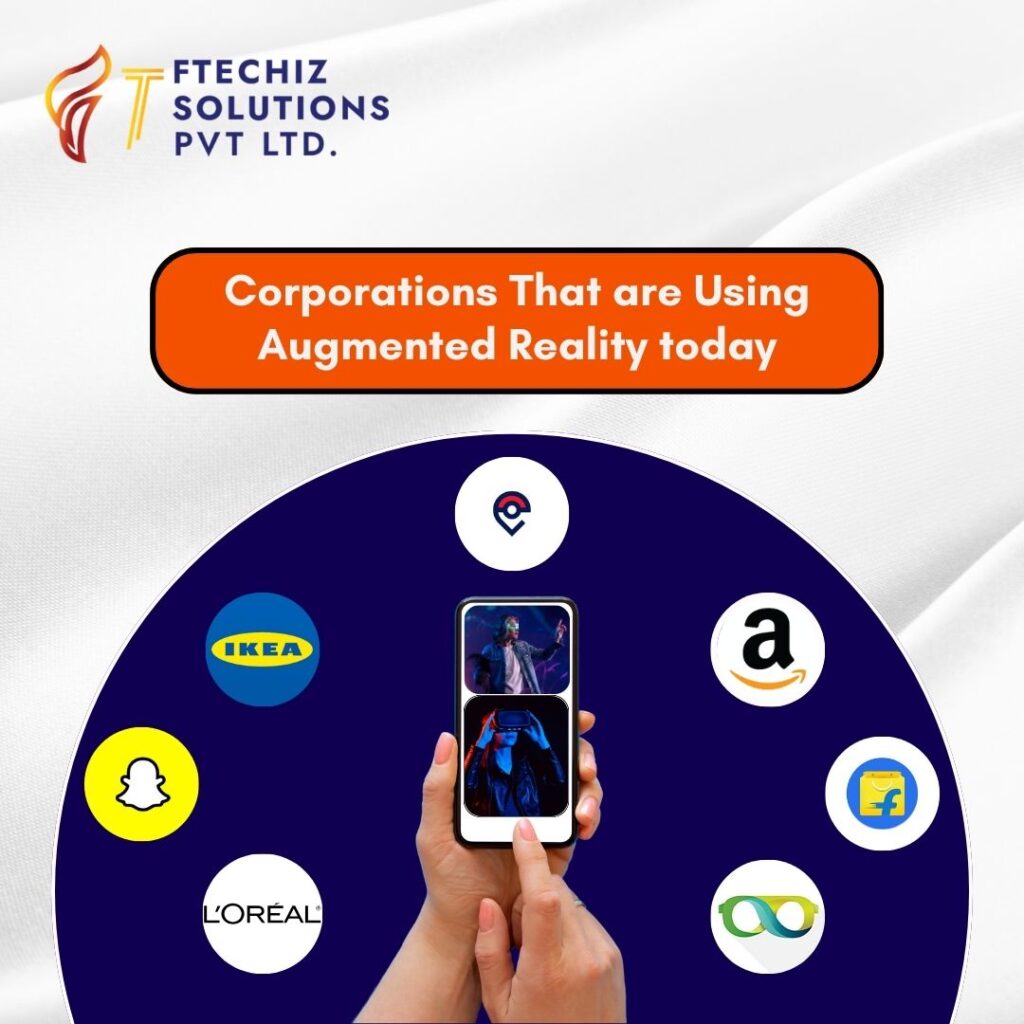Artificial Intelligence and Augmented Reality: How Artificial Intelligence is Changing Augmented Reality?

By 2027, the global augmented reality (AR) market is projected to reach a staggering $340 billion from Statista, driven by advancements in Artificial Intelligence (AI) and its integration into AR technologies.
That’s a staggering figure, isn’t it? It’s a clear sign that Augmented Reality (AR) isn’t just a passing trend but a technology that’s shaping the future. But what’s pushing AR even further into the spotlight? The answer lies in Artificial Intelligence (AI). When you combine these two technologies—Artificial Intelligence and Augmented Reality—you get something truly transformative. Let’s dive into how these two are coming together to redefine what’s possible.
What is Augmented Reality?
So, what’s Augmented Reality all about? In simple terms, AR is a technology that overlays digital content onto the real world. Imagine looking at your living room through your phone’s camera and seeing a virtual couch that fits perfectly with your decor. Cool, right? That’s AR in action. It enhances our physical environment with computer-generated elements, making it possible to interact with both real and digital objects simultaneously. But that’s just scratching the surface. AR isn’t just for fun—it’s being used in education, healthcare, retail, and many other industries to create more immersive and engaging experiences.
Now, what happens when you add Artificial Intelligence to the mix? You get AR that’s not only interactive but also smart and responsive.
How Artificial Intelligence is Changing Augmented Reality
Enhanced Object Recognition:
- AI algorithms allow AR systems to recognize objects more accurately and in real-time. This means that your AR app can identify different objects in your environment and interact with them in smarter ways.
- For instance, AI in AR can differentiate between a table and a chair, or even recognize specific brands of products, allowing for a more personalized and context-aware experience.
Improved User Interactions:
- AI-driven AR applications can learn from user behavior. This means the more you use an AR app, the better it gets at predicting what you want to do next.
- AI can track eye movements, gestures, and even voice commands to create a more seamless interaction between the user and the augmented world.
Real-time Data Processing:
- AR systems require a lot of data processing power to function smoothly. AI helps by analyzing and processing this data in real-time, making AR experiences more fluid and less laggy.
- This is especially important in applications like gaming or medical simulations, where a delay could ruin the experience or even pose a risk.
Advanced Environmental Understanding:
- AI enhances AR’s ability to understand the environment by mapping it in three dimensions. This allows for more accurate placement of digital objects in the real world.
- For example, in architecture, AI-powered AR can help in visualizing a building’s layout on an empty plot of land, ensuring that every detail aligns perfectly with the physical environment.
Personalization:
- AI algorithms can analyze user data to create personalized AR experiences. Imagine walking into a store and seeing virtual suggestions tailored just for you, based on your past preferences.
- This kind of customization isn’t just limited to retail; it can be applied in fields like education, where learning experiences can be tailored to individual needs.
Predictive Analytics:
- AI can predict outcomes based on AR interactions, helping industries like healthcare or automotive to foresee potential issues before they arise.
- For example, in surgery, AI-powered AR can assist doctors by predicting complications during the procedure, offering real-time guidance to avoid errors.
Advantages of Using Artificial Intelligence in Augmented Reality
Okay, let’s get into why AI and AR together is such a game-changer. First off, the combo makes everything smoother. AI’s ability to learn and adapt means that AR applications get better the more you use them. No more glitches or awkward interactions—just smooth, intuitive experiences that feel natural. With AI, AR can offer experiences tailored specifically to you. It’s like having a personal assistant who knows exactly what you need before you even ask.
And hey, if you’re an AR developer, AI is like that secret sauce that takes your app from “meh” to “wow.” It handles the heavy lifting of data processing and object recognition, freeing you up to focus on the creative stuff. Plus, the real-time data analysis means your apps will run like a dream, even with tons of data flying around.
For AR Developers: The Benefits of Using Artificial Intelligence
For developers, using AI in AR is like discovering a superpower. You’re not just creating an app—you’re crafting an experience that feels alive. AI’s object recognition capabilities mean your AR app can interact with the real world in ways that were impossible before. Whether it’s identifying a product on a shelf or recognizing a landmark in a city, AI adds that extra layer of intelligence that makes your AR app stand out.
But it’s not just about making cool stuff—it’s about efficiency too. AI streamlines the development process by automating complex tasks like data processing and environmental mapping. This not only saves time but also reduces the chances of errors, ensuring a smoother experience for the end-user. And let’s not forget about scalability. AI’s ability to learn and adapt means that as your user base grows, your AR app can evolve with them, offering more personalized and responsive experiences over time.
Corporations That are Using Augmented Reality today

- IKEA: IKEA Place uses AR to help customers visualize how furniture will look and fit in their homes, offering a realistic preview before making a purchase.
- Snapchat: Snapchat’s Lenses feature leverages AR to add interactive filters and animations to photos and videos, merging digital effects with the real world.
- L’Oréal: L’Oréal’s ModiFace app enables users to virtually try on makeup, providing a personalized experience by showing how different products will look on their skin tone.
- Pokémon GO: Pokémon GO brought AR into mainstream gaming by allowing players to catch virtual Pokémon in real-world locations, combining gaming with outdoor exploration.
- Amazon: Amazon’s AR View lets shoppers visualize how products like furniture and decor will look in their space, enhancing the online shopping experience with realistic previews.
- Flipkart: Flipkart Camera uses AR to allow customers to virtually place furniture and appliances in their homes, making shopping more interactive and informed.
- Lenskart: Lenskart’s AR feature allows users to virtually try on different eyewear styles, helping them find the perfect pair of glasses or sunglasses from the comfort of their home.
Why Hire AR Developers from Ftechiz?
So, why should you consider hiring AR developers from Ftechiz? With a deep understanding of both technologies, Ftechiz developers know how to create AR apps that are not only innovative but also highly functional. They’re all about pushing boundaries, using AI to enhance every aspect of AR development, from object recognition to user interaction.
But it’s not just about tech skills. Ftechiz developers understand that at the end of the day, it’s all about the user experience. They work closely with clients to ensure that the final product isn’t just technically sound but also engaging and user-friendly. So, if you’re looking to create an AR app that’s ahead of the curve, Ftechiz is the way to go.
Conclusion
In the ever-evolving world of technology, the fusion of Artificial Intelligence and Augmented Reality is proving to be a game-changer. AI is not only enhancing the capabilities of AR but also pushing the boundaries of what’s possible. From improved object recognition to personalized user experiences, AI is making AR smarter, faster, and more responsive.
As we move forward, the synergy between Artificial Intelligence and Augmented Reality will continue to unlock new possibilities, offering experiences that are more immersive, intuitive, and tailored to our needs. Whether you’re a developer or a business looking to innovate, understanding how AI is changing AR will be crucial in staying ahead of the curve. So, why not take the plunge and explore what this dynamic duo can do for you? The future of AR, powered by AI, is here and it’s nothing short of revolutionary.
FAQ: Artificial Intelligence and Augmented Reality
AR is a technology that overlays digital elements—like images, sounds, or other data—onto the real world. Imagine pointing your phone at your living room and seeing a virtual couch appear on your screen, perfectly fitting your space, or To give you one more example do you remember Pokémon Go it is also based on Augmented reality It’s like blending the digital and physical worlds into one seamless experience.
AI takes AR to the next level by making it smarter and more intuitive. With AI, AR apps can recognize objects, understand environments, and even learn from user interactions. This means AR experiences are more personalized, responsive, and downright impressive.
Imagine an AR shopping app that uses AI to recognize the brand of a shirt you’re wearing and then suggests similar styles that you might like. Or think of an AI-powered AR game that adapts to your play style, offering challenges that are just the right level of difficulty.
For developers, AI is like a power-up for AR. It handles complex tasks like real-time data processing and object recognition, which frees developers to focus on creativity. Plus, AI can make AR apps more scalable and adaptable, so they evolve with users over time.
Combining AI with AR brings a ton of benefits, including:
- Personalization: AI tailors AR experiences to individual users.
- Efficiency: AI automates complex processes, making AR smoother and faster.
- Innovation: AI opens up new possibilities in how AR can be used, from gaming to education to healthcare.
AI and AR are making waves in various industries, including:
- Retail: Personalized shopping experiences.
- Healthcare: Enhanced medical training and diagnostics.
- Education: Interactive learning environments.
- Gaming: Immersive and adaptive gameplay.
The future looks bright, As AI continues to advance, AR experiences will become even more immersive and intelligent. We’re talking about AR that can predict your needs, offer real-time assistance, and create experiences that feel almost magical.
Look for apps that are not just flashy but functional. They should offer smooth interactions, personalized content, and real-time responsiveness. And of course, they should be easy to use—because if it’s not user-friendly, what’s the point?
The first step is finding the right team—like Ftechiz—who can guide you through the process. Whether you’re looking to enhance customer experiences or innovate in your field, integrating AI and AR can give your business that cutting-edge advantage.


